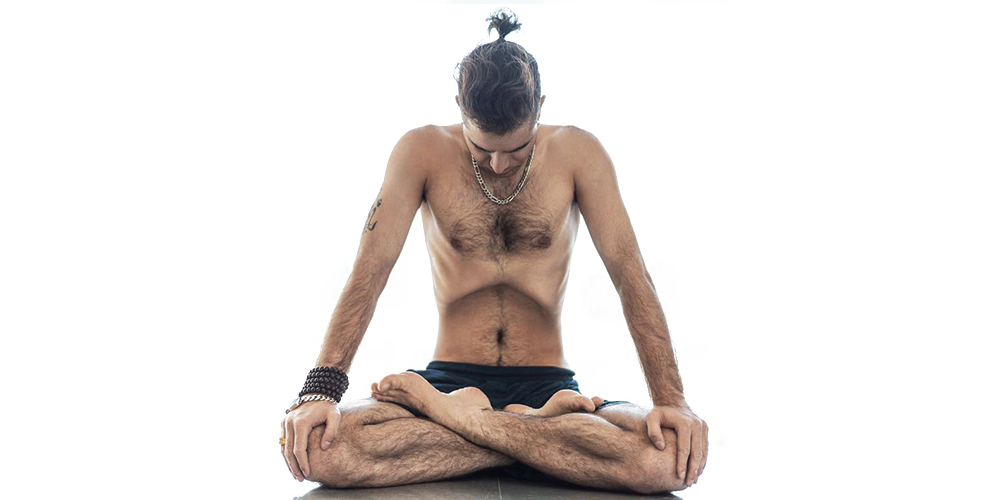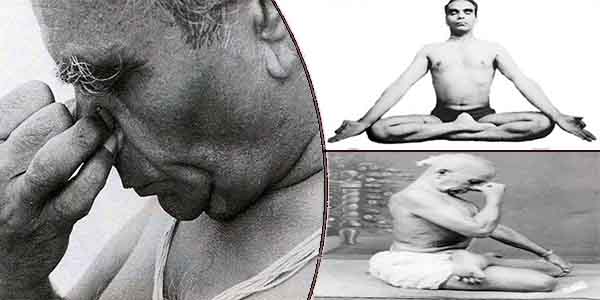B.K.S Iyengar promoted and propagated Yoga practice which focused on breath, awareness, and intelligence. Individual capacity was given more significance than a race to attain the perfect posture. Guruji’s teaching methods were an amalgamation of ancient and modern. He never tried to force the ancient solutions to modern issues rather found a middle path that is relevant in today’s time. But when it comes to breathing techniques or Pranayama, Iyengar Yoga lists out essentials to be followed in accordance with classical texts of Yoga. In this article of Iyengar yoga, we will discuss Kumbhakas.
Navigator
Iyengar Yoga: Kumbhakas
A normal person usually takes 15 breaths in a minute so a normal rate of inhalation and exhalation is 21600 in 24 hours. This rate of breathing is increased when a person is suffering from indigestion, fever, cold, cough, or acidity. Also in an emotional state of fear, anxiety, pain, anger, and lust the breathing rate increases substantially. The yogi measures his life span by a number of breaths and not by a number of years. Since breathing is lengthened by Pranayama, its practice leads to longevity.
Pranayama uses lungs as pneumatic tools which if used scruffily can greatly affect the tool and the tools man. Therefore great care must be taken while practicing them. The retention of breath during full inhalation and restraint following complete exhalation is traditionally known as Kumbhaka.

Requisites to remember about KUMBHAKAS during Iyengar Yoga
- The Mastery of Inhalation is called Puraka. While complete exhalation is known as Rechaka.
- Puraka and Rechaka should be well-practiced before starting ANTAR KUMBHAKA ( retention following inhalation)
- Once the practice of ANTAR KUMBHAKA is so well done that it becomes a natural and spontaneous act, BAHYA KUMBHAKA (restraint following exhalation) should not be tried.
- It is very often noted that in an attempt to retain either of the two Kumbhakas for a longer period of time, a student tends to either tighten or loosen the diaphragm and abdominal organs too much. Although this happens totally unconsciously and unintentionally, yet all care should be taken to avoid it.
- The Body locks or Safety Valves applied during the breathing practice are called BANDHAS. The neck lock is called JALANDHAR BANDHA, the abdominal lock is called UDDIYAN BANDHA and the root lock is called MOOL BANDHA. All three bandhas are imperative to any person trying to learn Pranayama and bandhas can only be performed during the practice of KUMBHAKA.
- In the starting, if a student feels it very difficult to hold in or hold out-breath for too long, he should do a few repetitions of deep breathing before each kumbhaka.
- Kumbhaka, if at all brings any disharmony in the rhythm of in-breath and out-breath; its duration should be curtailed immediately.
- Kumbhaka is strictly prohibited for people having ear problems like tinnitus, pus, or loss of hearing due to diabetes.
- Also, people having Glaucoma or related eye problems should refrain from Kumbhaka practice.
- Constipation is a common occurrence during initial days of practice and it goes away after some time.

Importance of Kumbhakas
Kumbhaka during pranayama is the time of silence. Even the inhalation and exhalation reaches its full extent and stops. This silence is the most important seed for all the other stages that come after pranayama. In the moment of silence, the intelligence of sense organs is drawn inwards. For the first time, a practitioner experiences world on the inside. He gets a firsthand know how of happiness that illuminates his inner being all the time. As the time and duration of KUMBHAKAS increase, one gets more and more aware of the futility of looking for happiness in outside world in materiel and people. His expectation for joy and comfort in possessions and relations slowly starts to diffuse and he feels less stressed. His anxiety to compete and get all, also transforms to feeling of cooperates and grows.
Since eyes are closed at all times during the observance of pranayama, mental repetition called JAPA is used to note the time. JAPA is of a holy word or name. This repetition of this holy word or name act as a seed in the mind of a yogi. As seed grows to be a tree one day similarly continuous repetition or MANTRA leads to a state of deep concentration called DHYAAN. DHYAAN happens to be the 6th stage of eight limb yoga of Sage Patanjali.
Sarvyoga takeaway
It has been seen that people who have regularly practiced KUMBHAKAS in pranayama have given up cravings without any special medication or effort. Chain smokers, compulsive drinkers, and overtly sexual people have experienced that their urge has gone down exponentially and many left psychosomatic bad habits totally.
Domination and tyranny of senses is left defenseless when dedicated and consistent practice of pranayama is done. This allows a student to move to the next limb of yoga- PRATYAHARA. Pratyahara is nothing but understanding the sense organs and their inertia. It is that point where a yogi puts down the foot and stops being slave to something that is his slave.

